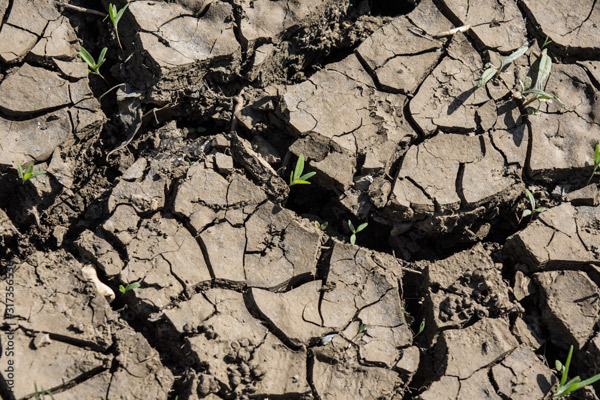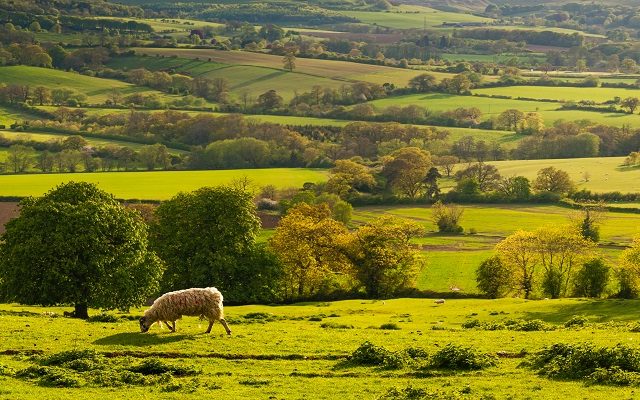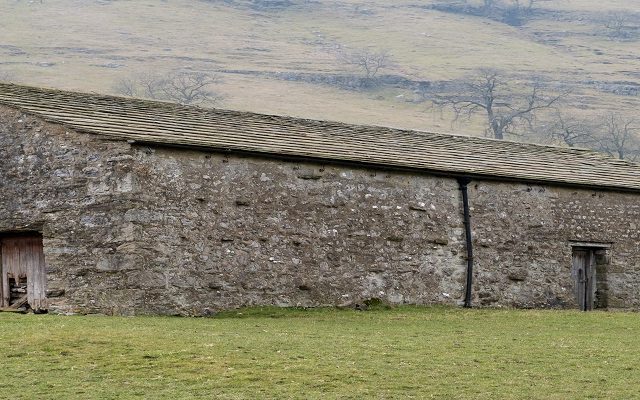How climate change is impacting farming systems
Climate predictions indicate extreme weather such as this year’s drought is now the norm. So how can farmers adapt, and how might the climate of the future shape our industry and landscapes?
This year, Yorkshire farmer Richard Bramley did something he’d never done in thirty years of farming: he went on holiday in August. The hot, dry conditions had brought harvest so far forward, he’d found himself in the middle of what is normally the busiest month with that most novel of things – free time.
Yet his situation highlights how complex, nuanced and individual the effects of climate change will be. Farming 500 acres of combinable and root crops near York, he might have seen his earliest harvest ever, but the land’s location on a floodplain has also left it underwater every winter for the past three years.
The reality of extreme weather events
‘Thirty years ago, flooding was rare,’ says Bramley, chairman of the NFU’s Environment Forum. ‘This year, we had some of our land under twelve feet of water in February. Then we went into a dry spring and the drought after that. The high temperatures made combining nerve-racking, so farmers have had to be vigilant. Amazingly, a lot of the crops that we combine here managed to hold some fairly decent yields – but they would have been fantastic if we’d had the rainfall.’
For Bramley, there is no doubt that this year’s weather variations are driven by climate change. ‘The scientific community is broadly in agreement on this and farmers are seeing it first-hand. It might be stating the obvious, but farmers will have to take care in dealing with more highs and lows, as these are likely to become more extreme.’
More extreme, and more frequent. In July, climate scientists stated that the climate emergency had made that month’s heatwave ten times more likely. The past decade has been 10% wetter and 0.2°C warmer than 1961-1990. and the Met Office is predicting generally warmer, wetter winters and hotter, drier summers. By 2070, UK winters could be up 30% wetter and summers up to 60% drier.
There will be some obvious losers in this scenario – those on particularly drought-prone sandy or chalky ground could see falls in productivity, for example, and there’s a possibility that coastal areas will be lost to salination if sea levels rise significantly.
In tandem with this are growing calls for land to be put to non-agricultural uses in a bid to combat climate change and boost biodiversity. Of course, there are revenue-generating opportunities for farmers in this respect, but as pressure grows to sequester carbon rather than release it, the once-unimaginable situation has arisen that some land might be viewed as simply too environmentally ‘valuable’ to farm: peatlands in the Fens, for example.
It’s all about water management
What 2022 has brought into sharper focus than ever is how water management will be key to the prosperity of farmers and landowners, says Jonathan Armitage, national head of farming for Strutt & Parker.
While broadacre agriculture on the whole did well this year, a lack of grass left a shortage of forage for livestock, forcing farmers to start using their winter supplies. Thirsty vegetable crops such as potatoes also struggled.
Access to water is becoming increasingly critical. ‘There needs to be a move to build more reservoir storage and for farmers to be given as much capacity as possible to abstract water in the winter when it’s available, in order to fill those reservoirs,’ says Armitage,
‘There are groups of farmers in close proximity to each other who are working together to build water storage and also distribution networks from the reservoirs to the field. There’s going to have to be more of that sort of collaboration.’
Armitage highlights that water availability will be a particular challenge for high-value vegetable growers, many of whom rent land on short-term arrangements and are reliant on a range of different abstraction licences. ‘Many of these businesses don’t really have a formal handle on their risk exposure to water availability. They will know the landowner has a licence to abstract, but is it a licence for life or is it time-limited? What is the availability of water in that particular bore hole? Is there a risk of it not being available in the future? These are all questions I would be asking.’
At the other end of the spectrum, there is the problem of dealing with too much, rather than too little water. Drainage is likely to move up the agenda for those in areas prone to flooding – both to prevent the immediate consequences of flooding, and to build crop resilience as well-drained soils encourage root development, helping build a crop’s ability to survive through a hot, dry summer.
‘Resilience’ is a word that will be heard ever more frequently when we talk about adapting to climate change – and part of this means financial resilience, as well as agronomic.
Armitage believes this will bring more of a focus to benchmarking, budgeting and managing risk. This might involve running a business risk register, which is a simple document setting out the severity of business risks, the potential impact of each risk and potential mitigation measures. The exercise of formalising risk management this way helps to identify and understand risks not previously considered. Considering the increasingly shifting sands of climate, economics and inflationary pressures, this alone can be invaluable.
‘There are particular crops which are clearly more exposed to weather events,’ he says. ’For example, if you have a flood in a field of potatoes that will have a much bigger financial impact than a flood in a field of wheat.’
Thinking about a risk register is an opportunity to get a clear handle on these weather-related risks – from flooding to drought – and the relative exposure associated with different crop types. Having a mitigation plan integrated within existing budgets should help farmers maintain sufficient flexibility, so they can adapt to the unexpected.
Windows of opportunity
Weather extremes, meanwhile, are also reducing the windows in which activities can be carried out.
Producers are responding to this in various ways, including by investing in bigger kit with the capacity to get the job done in a shorter timeframe. Others are introducing a more diverse range of crops with varying planting and harvesting times, allowing them to use smaller, less expensive equipment that’s operational for longer periods.
Armitage predicts that over time changes in cropping could become more pronounced, with certain types of crops becoming less popular on certain types of land. ‘You might see very heavy land where we become less able to grow winter crops because of poor soil conditions in the autumn. Conversely, some people with light land might stop growing spring cereals, because in a drought it just dies. If you look at countries in Eastern Europe with very light soils, we see they grow much more rye and maize which are drought tolerant.’
Regenerative farming – is it the answer?
Plant diversity is one of the tenets of regenerative farming – a system heralded as part of the answer to climate change because of its focus on soil organic matter, which in turn improves the quality and performance of soil. It’s an approach that employs methods that, although often lauded as incredibly new and ‘of the moment’, have been common on many farms for generations, according to Mary Munro, head of farming in Scotland for Strutt & Parker.
‘Most of Scotland is already in a regenerative agriculture system since a large part of this system is its use of mixed farming,’ she explains. ‘True disciples of regen will say it’s essential to have livestock, since they are then producing their own manures, plus
they have grass and forage crops in their rotations and so they’ll be maintaining their soil carbon.’
Even for those not fully sold on the regen route, there are opportunities to introduce more organic matter to their soils – using cover crops and green manures, for example, says Munro. ‘The benefits are twofold, helping to retain moisture in the soil and also reduce reliance on manufactured fertiliser, which has become prohibitively expensive.’
Regenerative farming practices are already increasingly being demanded by customers, with companies such as McCain and PepsiCo requiring that suppliers shift to strict regenerative farming protocols. However, given many potato growers are short-term tenants, without control of the land over the full rotation, this is not an easy fix. These growers will need to establish new agreements with landowners that allow them to meet their customers’ requirements; the challenge will be maintaining profitability when landowners may well demand higher rents in return for implementing regenerative practices.
There are global considerations to take into account too. ‘Growing food needs to be viable and regenerative farming practices are not always immediately profitable,’ explains Munro. ‘It’s all very well implementing such regenerative measures domestically, but if we’re still importing food from suppliers in countries with poor farming practices, something’s clearly not adding up.’
Assessing the impacts of climate change in the UK
These are some of the issues that will no doubt inform the government’s third National Adaptation Programme, which will set out the actions government and others will be taking to address the risks and opportunities of climate change over the next five years. Due to be published next year, it will give a steer as to where policy will be heading. ‘Given the complexity of farming and ever-increasing volatility – not just in the climate but also in geopolitics and global economics – there needs to be flexibility as to how policies are implemented,’ says Munro. ‘Rules, regulations and guidelines tend to be fixed, while farming has to adapt according to the seasons, the times, market conditions and multiple other variables.’
Of course, adapting to climate extremes isn’t just about managing potential disaster, but also seizing opportunities. Here’s where UK farming can get creative: what crops might become more viable in a warmer climate?
A few years ago, the idea of decent British sparkling wine might have been laughable, yet as the NFU’s Richard Bramley explains, champagne producers are now buying land in East Sussex. ‘We can also expect to see more grain maize and possibly even soya becoming more commonplace within rotations. There’s certainly going to be more opportunity here.’
There is little doubt that the farming landscape will be different as a consequence of climate change. It is introducing a new set of risks for farmers, but at the same time opening up a new world of different crops. But as Munro points out, the options will vary from one farm to the next. ‘That’s the way of it with farming. There isn’t one answer.’
If you would like to discuss any aspect of this article, contact Jonathan Armitage or Mary Munro. This article first appeared in our latest issue of Land Business. For more download the Autumn 22 edition of Land Business.






